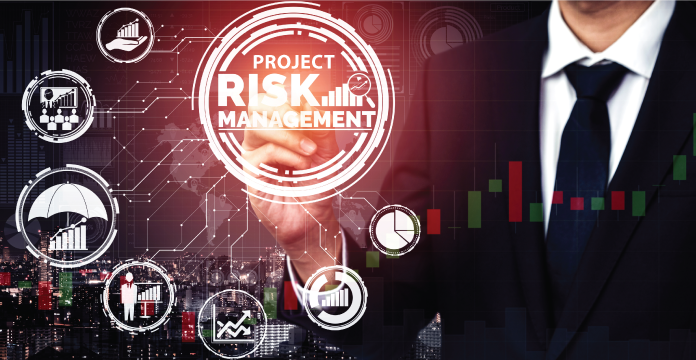
There are new risks associated with each new project in an organization. Lack of a robust risk mitigation strategies make these risks present throughout the project lifecycle and can really slow down the entire process of completion. This costs organizations a lot of time and resources. Therefore, to reduce the cost to the company, there are proven project risk mitigation strategies that each project team member can practice to make sure the project gets completed on time and without any hindrances.
According to a recent study, 38% of companies describe their risk management system as immature, which only increases their losses. The risk management strategies that companies take come with risk mitigation processes where the company can preemptively anticipate the consequences of all the risks that are connected to the project.
These risk mitigatin strategies in project managment are used to reduce any threats to a project and protect the final outcome. The project team members implement various mitigation strategies throughout the lifespan of the project so that they can easily identify, monitor as well as evaluate all the possible risks and their consequences while they complete their project.

Risk Mitigation Strategies in Project Management
There are five risk mitigation strategies in project management that help reduce or mitigate the risk. They are:
- Accepting the risk
- Avoiding the risk
- Controlling the risk
- Transferring the risk
- Monitoring the risk
Accepting the Risk
When the project members talk about accepting the risk, they collaborate with each other while analyzing all the risks and then define the consequences of each risk to see which ones are acceptable. The main purpose of this activity of accepting the risk is to bring these risks to the forefront so that all the team members have a better understanding of the risks in the project and their consequences.
They check for all the vulnerabilities of the risks presented as well. This strategy is the cost impact of the risk. It can also be used to see how much any risk could affect the schedule of the project to help the team members keep a better track of their deadlines. There are also risks that impact the performance of the project.
Avoiding the Risk
Avoiding the risk is a strategy where the team members come up with ways in which they can avoid the possibility of the risk occurring altogether. Here the accepted risks and their consequences are considered and the opportunity to avoid certain risks becomes clear as well. Sometimes, what team members do is create a plan for the risk that could take place and then take preventative steps to completely avoid it.
There can be risks to the performance that can be avoided by distributing the workload based on each member’s capability and skills. Here, team members plan ahead and see any problems that could take place with the scheduling of the project and then take steps to solve those problems before they arise. The same goes for avoiding any additional costs. All the costs are determined beforehand so nobody deviates from the budget.
Controlling the Risk
When the risk cannot be avoided altogether, team members come up with ways in which they can control the impact of the risk. They take into account all the identified risks and then see the ones they cannot accept or avoid, and then come up with an action plan to reduce the impact or eliminate it.
If there are any foreseeable issues with the budget or any flaws in the planning or funding, the team members can work around the available budget and create a plan for the same so all additional costs can be eliminated. When it comes to project deadlines, accurate scheduling will help eliminate any chances of delay. Monitoring the quality of the project and directing daily tasks can help eliminate any hindrances to performance as well.
Transference of Risk
Another strategy for risk mitigation is the transference of risk. This strategy involves giving the responsibility of the risk and its consequences to another party, such as insurance. If the project is making a product and all the processes are fine except for a few minor defects, the company can either assume the responsibility or transfer it to a vendor who provided a defective part in the final product.
When it comes to scheduling, instead of holding the entire team or the company responsible for any delays to the project, the risk is transferred to the employees responsible for it. Transference of risks when it comes to cost is to shift focus on the finance teams responsible for budgeting.
Monitoring the Risk
There can be changes that occur in the risks from the time they have been identified during the project’s lifecycle. These changes, if they are not paid attention to, can drastically affect the project’s health and delivery. This is why monitoring all risks is important.
Team members need to take up the responsibility to monitor the project for any changes in the risks and watch out for any new risks that might come up while the project is going on. Monitoring projects for risks and consequences involves watching for and identifying any changes that can affect the impact of the risk. This strategy should ideally be a part of the project review plan.
All three aspects, i.e., cost, scheduling, and performance of the project need to be monitored regularly along with the risks that come with it.
Final Thoughts
The unknown threats to any project or organization are the scariest. This is why risk mitigation is so important. The risk mitigation strategies need to be implemented in every stage of the project, but the only way this can happen successfully is if all the employees have sufficient knowledge and training to implement various risk management and mitigation practices in their projects.
A good way to educate employees about different risk management practices is to make them part of the existing risk culture of the organization as part of their on-the-job training. So once they join they can be fully aware of all the processes in place, thereby adhering to the risk culture present in the company.















